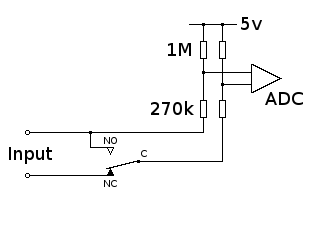Hello,
I'm using a TS5A22364 in an application where the signal will be below ground (which this component is supposed to support), but I'm getting severe distortion when the voltage drops more than a few mV below ground. The TS5A22364 is basically a solid-state DPCO relay.
The application is for zero calibration of a differential input (to an ADC) and the part is used to disconnect one side from the signal, and short it to the other side - the ADC can then read this level and use it as a zero reference. The resolution is in the region of a few hundred nV, and voltages are likely to range between -1V and +1V.
The problem I have is that when the voltage drops below about -0.05V, I start getting a noticeable voltage difference between C and NC. For positive voltages, and slightly negative voltages, it works fine.
My interpretation of this is that there's a shunt diode to (from?) ground, and this starts conducting when the voltage drops below ground. If I disconnect the power ground to my circuit, and connect my inputs (which connect to C & NO) to ground, the circuit operates, albeit riding 0.33V above ground at 15mA power consumption or 0.93V at 45mA. Admittedly, this does sound like a resistance of about 21 Ohms, rather than a diode, but whatever it is, it's within the TS5A22364.
I'm running the TS5A22364 at 3.0V, and the datasheet (Rev. E) says it can handle inputs down to V+ -5.5V, so I should be okay from -2.5 to +3.0V?
Interestingly, the "Absolute minimum and maximum ratings" states:


